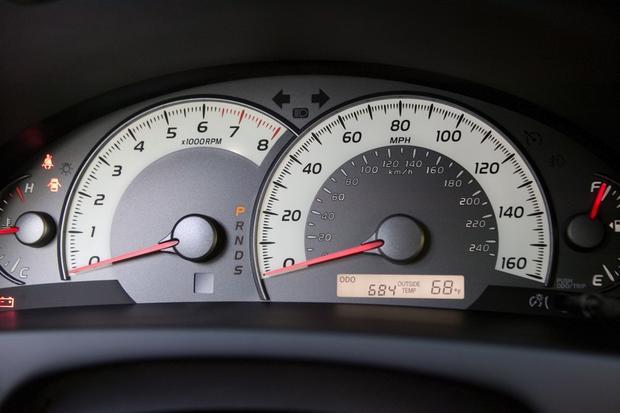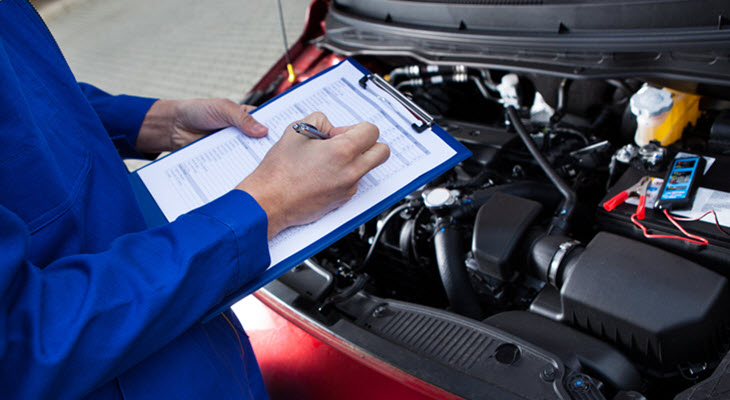Every driver must have had this question popped into their mind but very few dare to spill it out. Well, it may seem to be a ridiculous question, or is it?
It is legit for a car enthusiast to have loads of queries about automobiles. It makes more sense when it is related to car mileage as it indicates the performance and longevity of a car.
Contents
What Is Car Mileage?
Mileage refers to the total distance a car has covered. You can know how many miles a vehicle has been driven by looking at the odometer reading. The mileage reading is important at the time of purchasing a used car.
An average of 12,000 miles per year is the standard although there are many models that can drive more miles without derogating the performance. However, the fewer miles it has been driven, the better. Car mileage does not stand for fuel economy.
Does Reverse Driving Make the Car Mileage Go Up?
Yes, but only slightly. Only a highly skilled driver can drive in reverse for some distance. Otherwise, no one can do it for more than several hundred feet.
However, the effect on the odometer reading will slightly vary depending on whether you are driving an old or new model of vehicle.

When you are driving an old car
If your car dates back to the pre-70s, chances are high that most of its measuring components including odometer, speedometer, tachometer, and others are mechanically linked.
These instruments are unlikely to yield accurate reading when you are driving reverse. Most possibly, the speedometer will stay at zero but the odometer will roll back when you drive an old car in reverse gear.
SEE MORE:
- Can You Drive in Reverse Gear for an Indefinite Period?
- Is It Possible to Shift The Manual Transmission Gear in a Straight Line?
When you are driving a new car
If you are driving a relatively newer model, something that is manufactured in the 90s or later, chances are higher that all the measuring instruments are digital and electronically linked.
In that case, the speedometer will show the speed when you drive in reverse and the odometer will display the increased mileage reading after sensing that the car is moving.
How To Stop Cheating with Car Mileage?

The car mileage will go up (only slightly) in a new car when you drive it in reverse gear. However, how to detect if someone wants to show less mileage in an old car?
First of all, no one drives in reverse unless it is for parking or some emergency situations. So, there’s no chance that the odometer reading is decreasing a lot.
Even if someone drives a car a lot in reverse, it is not possible to roll back the odometer reading from 50,000 to 40,000 km because the change is slow and almost ignorable.
Here are steps to help you avoid car mileage cheating:
Verify the vehicle history
Request a comprehensive vehicle history report from reputable sources like Carfax or AutoCheck. These reports can reveal inconsistencies in mileage readings, accident history, and more.
Check the odometer
Physically inspect the vehicle’s odometer. Look for signs of tampering, such as misaligned numbers or evidence of opening the dashboard. Ensure the odometer matches the vehicle’s overall condition and wear.
Request maintenance records
Ask the seller for maintenance and repair records. Consistent maintenance at different mileage intervals can serve as an indicator of accurate mileage.
Examine the title and registration
Review the title and registration documents for any discrepancies in mileage readings. Cross-reference this information with the odometer reading on the vehicle.
Look for warning signs
Beware of deals that seem too good to be true. Extremely low mileage on a used car can be a red flag. Ask questions and investigate further if something doesn’t add up.
Get a pre-purchase inspection
Prior to purchasing a used car, have it inspected by a trusted mechanic or technician. They can identify signs of odometer fraud or other hidden issues.
Use professional services
Consider using a professional appraisal service that specializes in inspecting used cars for signs of fraud. They have the expertise and equipment to detect tampering.

Check for digital odometer readings
Modern vehicles often have digital odometers. Ensure that the displayed mileage matches the vehicle’s condition and history.
Meet in safe locations
When meeting with sellers for test drives or inspections, choose safe, public locations. Avoid private or remote areas to minimize the risk of fraud.
Educate yourself
Familiarize yourself with the laws and regulations regarding odometer disclosure in your region. This knowledge can protect your rights as a consumer.
Report suspicious activity
If you suspect odometer fraud when buying or selling a vehicle, report it to the appropriate authorities, such as your local Department of Motor Vehicles (DMV) or consumer protection agency.
Document the transaction
Keep a record of all documents and communications related to the purchase or sale of a vehicle. This documentation can be valuable if you need to dispute a fraudulent transaction.
Preventing odometer fraud requires diligence, thorough research, and the use of trusted resources.
By following these steps, you can reduce the risk of falling victim to car mileage cheating and ensure a fair and transparent transaction when buying or selling a used car.
FAQs on Increased Car Mileage
-
How does the odometer measure mileage?
The odometer measures mileage by tracking the rotation of the car’s wheels. Each rotation corresponds to a certain distance traveled, which is then recorded as mileage.
-
What happens to the odometer when driving in reverse?
When driving in reverse, the odometer remains static and does not record any increase in mileage. It remains unchanged until the vehicle is driven forward.
-
Can you manipulate the odometer by driving in reverse to lower mileage?
Deliberately driving in reverse to lower mileage is not a practical or ethical way to reduce a vehicle’s recorded mileage. Modern vehicles often have digital odometers that are tamper-resistant.
-
What are the implications of altering or tampering with the odometer?
Tampering with the odometer is illegal in many places and can result in legal consequences. It can also misrepresent a vehicle’s true condition and value, potentially deceiving buyers.
-
How can I accurately track my vehicle’s mileage?
To accurately track your vehicle’s mileage, rely on the odometer, which records forward movement. You can also keep a manual log of your trips if you need to track mileage for specific purposes.
-
Is there a way to reset or modify the odometer legally?
Odometer tampering or resetting is generally illegal. If your vehicle’s odometer is malfunctioning or needs repair, consult a professional mechanic or technician to address the issue legally and ethically.
Check out this video from Denver7 to learn how to spot odometer rollback fraud on your used vehicle!
Final Words
In the end, car mileage does not increase when you drive in reverse. The vehicle’s odometer records mileage exclusively based on the forward movement of the vehicle.
This fundamental principle of odometer operation is designed to accurately reflect the distance a car travels on the road.
While exceptions are rare and usually involve unusual scenarios like towing in reverse, driving backward under normal circumstances does not contribute to an increase in the recorded mileage!




Does the mileage of a stationed car increase when the engine is one.
An electrical short circuit connection (possibly caused by water) had at one time caused the speedo needle point to me the vehicle is running at a speed of 70 to 80 kph.
I had stopped, engaged the park brake & the engine was idling. I noticed the needle jumping from 70 to 80 kph. That looked a bit funny.
Later after repairs, I regreted that I could have recorded the mileage and checked again after some minutes to see whether there were changes after these funny games.